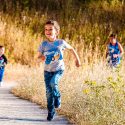Physical exercise and movement can be a powerful tool in helping children with ADHD learn and thrive. In this article, we will explore the benefits of exercise for children with ADHD and how it can improve their overall well-being.
One of the primary benefits of physical exercise and movement for children with ADHD is that it helps to increase focus and attention. Exercise stimulates the release of dopamine, a neurotransmitter that plays a critical role in motivation and focus. This increased dopamine release helps children with ADHD to sustain attention and focus for longer periods, improving their ability to learn and perform academically.
In addition, exercise can help to regulate mood and emotions in children with ADHD. Children with ADHD often struggle with emotional dysregulation, making it difficult to manage their behavior and interact appropriately with others. Exercise releases endorphins, which are natural chemicals that promote feelings of well-being and reduce stress and anxiety. Regular exercise can help to reduce hyperactivity and impulsivity in children with ADHD, making it easier for them to control their behavior and emotions.
Movement is also critical for the development of cognitive skills in children with ADHD. Research has shown that children who engage in regular physical activity have better working memory, cognitive flexibility, and overall executive function. This means that they are better equipped to plan, organize, and prioritize their thoughts and actions, leading to improved academic and social outcomes.
Furthermore, physical exercise and movement provide an opportunity for children with ADHD to build confidence and self-esteem. Many children with ADHD struggle with low self-esteem, which can impact their social interactions and academic performance. Regular exercise can help children with ADHD feel more confident in their abilities, improving their overall well-being and reducing the negative impact of ADHD on their lives.
There are many ways that parents and educators can incorporate physical exercise and movement into the lives of children with ADHD. Some effective strategies include scheduling regular exercise breaks throughout the day, incorporating movement and physical activity into academic lessons, and encouraging participation in organized sports or activities. Additionally, activities such as yoga and mindfulness can help children with ADHD learn to manage their emotions and develop self-regulation skills.
Physical exercise and movement are essential tools for helping children with ADHD learn and thrive. By increasing focus and attention, regulating mood and emotions, promoting cognitive development, and building confidence and self-esteem, exercise can help to reduce the negative impact of ADHD on a child’s life. Parents, educators, and healthcare professionals should encourage children with ADHD to engage in regular physical activity, providing them with the opportunity to achieve their full potential and live happy, healthy lives.

Comments are closed